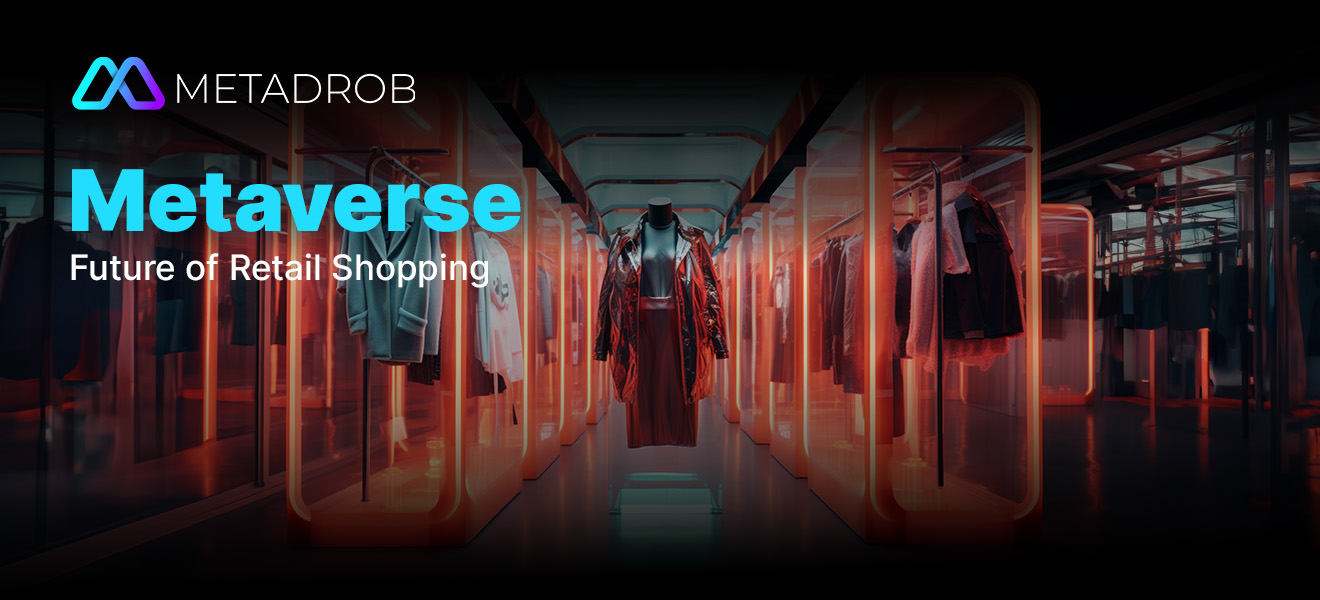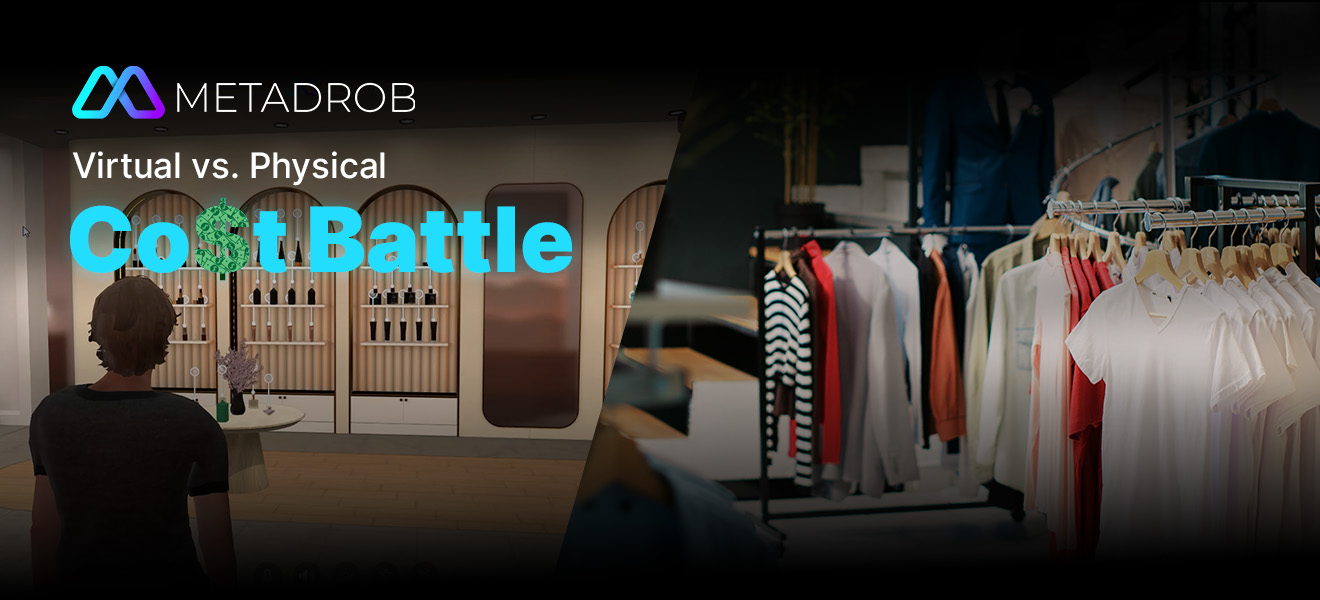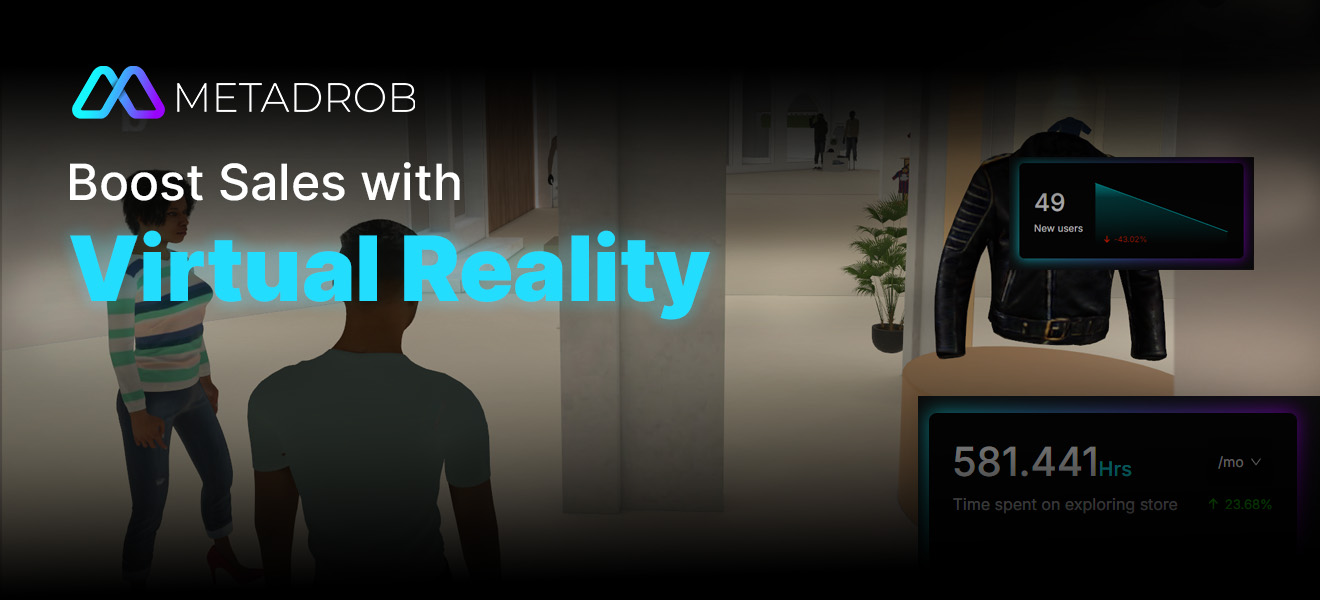Is a Virtual Store More Cost-Effective Than a Physical Store?

Introduction
Immersion-focused digital environments, referred to as the metaverse, are rapidly becoming the leading frontier in retail innovation. As technology developments keep breaking down the differences between reality and virtuality, customers are becoming more interested in the engaging shopping experiences found in the metaverse.
This model transformation may completely alter the retail sector by changing how companies relate to customers, display their products, and generate revenue.
Retailers can develop virtual stores to deliver the metaverse shopping experiences to boost customer engagement, allow interactive product demonstrations, and offer personalized suggestions, all of which surpass what’s available in standard web shopping. Make sure to read this article all the way through to explore how the retail industry will adjust due to the metaverse.
The Rise of Metaverse Shopping
Retail has found a possible new territory in the metaverse, an online space where users can construct and take part. Virtual shopping experiences have been confirmed to be possible in the initial trials of Second Life and Decentraland. The actual reason for the popularity of metaverse shopping was the upsurge in technology development combined with rising customer demand.
Important firms have been taking the lead in this trend, uncovering the promise that the metaverse holds. Leading companies, including Vans, Gucci, and Nike, have built reputations for their original ways of connecting with their audience in new online spaces.
Elements, including the quick rise in online commerce throughout the COVID-19 pandemic, increasing consumer comfort with online environments, and improvements in both virtual reality and augmented reality, are contributing to the growth of metaverse retail.
Benefits of Metaverse Shopping for Retailers
Thanks to the metaverse, retailers can leverage a leading platform to engage with their clients and grow sales. The individualized, special, and notable shopping encounters found in virtual environments that combine interaction and immersion boost customer satisfaction as well as loyalty.
Enhanced Customer Experience
One of the main benefits of metaverse purchasing is that it provides customers with engaging virtual try-ons and product demonstrations. By offering a new way to engage with products, customers build greater confidence in their shopping decisions.
Retailers are able to design personalized shopping experiences for each client by bringing in their preferences and customer data. A high level of personalization can reinforce the relationship between brands and consumers.
On top of that, the metaverse delivers a social environment in which users can connect to build communities. This trend boosts the adrenaline of shopping, pushing consumers to repeat their purchases and to be more loyal to the brand.
Increased Engagement and Loyalty
Engaging in shopping within the metaverse gives clients extraordinary and memorable experiences that support interaction.
Through the addition of gamification elements, such as virtual competitions and reward programs, companies can raise their shopping experiences and keep customers involved with interactive and enjoyable aspects that will encourage their repeat business.
The metaverse’s power to facilitate a feeling of community and belonging also contributes to a rise in brand supporters and customer loyalty.
New Revenue Streams
The metaverse provides retailers with new avenues to generate income apart from normal sales. The metaverse provides the opportunity to market virtual products and services, including digital dresses, accessories, and special experiences. These digital products can facilitate the shopping experience and generate new revenue channels for companies.
Besides, sponsorship and advertising prospects exist in the metaverse. Different methods for the promotion of brand products and services are product placements, sponsored events, and virtual billboards. This method can support a more significant reach and fortify brand visibility.
The collected information from consumer interactions in the metaverse can help tailor marketing tactics. In order to improve effectiveness, retailers can design marketing strategies in line with distinctive demographics and interests, following an analysis of customer behavior and preferences.
Challenges and Considerations for Metaverse Shopping
Metaverse shopping has several obstacles despite its enormous promise. Technological constraints present formidable obstacles. Certain hardware needs, like AR and VR headsets, can be pricey and inaccessible to some customers. Furthermore, latency and internet connectivity problems can impede the immersive experience, frustrating users.
For metaverse commerce to become widely used, accessibility issues must be addressed while maintaining a seamless and pleasurable user experience. Lastly, there are difficulties with connecting metaverse shopping with the current retail infrastructure.
Careful planning and collaboration are needed to connect physical and virtual establishments to achieve a seamless customer experience. Successful metaverse commerce depends on ensuring users can move between the two environments with ease.
The Future of Metaverse Shopping
Emerging Trends and Innovations:
- AR and VR Integration: Metaverse shopping experiences will get even more realistic and immersive as AR and VR technology advances.
- Blockchain and NFTs: While non-fungible tokens, or NFTs, can be used to represent one-of-a-kind digital assets like virtual goods or experiences, blockchain technology can facilitate safe and transparent transactions inside the metaverse.
- Influencer marketing and social commerce: In virtual worlds, social interactions and influencer marketing will be vital for increasing engagement and revenue.
Potential Impact on Traditional Retail:
- Disruption of purchasing patterns: By providing more engaging, custom experiences, metaverse purchasing has the potential to disrupt conventional shopping patterns.
- Opportunities for collaboration: By integrating the advantages of both worlds, physical and internet retailers may work together to create seamless omnichannel experiences.
- Adaptation necessity: Retailers need to adjust to the ever-changing retail environment by making investments in metaverse technologies, creating virtual shop strategies, and learning about the preferences of consumers in the metaverse.
Revolutionize Your Store Today
To conclude, the metaverse offers retailers a revolutionary chance to reimagine the buying experience. We should anticipate much more tailored and immersive virtual shopping experiences as technology develops.
Innovation must be welcomed, and companies must change with the times to remain ahead of the curve in the consumer market. Retailers have a unique opportunity to engage with customers in novel and engaging ways through the metaverse, which promotes brand loyalty and increases sales. In this quest, Metadrob can prove to be an invaluable partner.
Our area of expertise is in custom virtual stores that work well with conventional retail operations. Retailers can broaden their reach, add value, and take advantage of the increasing opportunities presented by this new technology by utilizing our experience to forge a solid metaverse presence.
So, here’s your chance to bring the change! Book a free demo with us today before they are gone!
Connect with Metadrob
Ready to take the first step towards unlocking opportunities, realizing goals, and embracing innovation? We're here and eager to connect.

+91 966-004-4020





